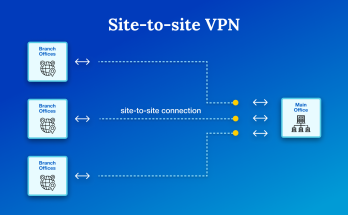JAKARTA, cssmayo.com – Alright, let’s dive right in. Digital Forensics: Uncovering Cyber Evidence and Investigating Digital Crimes isn’t just a flashy phrase they toss around on Techno shows. Nope. This is hands-on, real-life detective work, but it’s all behind the keyboard. Ever since one sleuthing night when I found out a missing file was actually renamed (rookie mistake, I know), I’ve been hooked on the digital hunt.
Digital Forensics is the systematic process of collecting, analyzing, and preserving electronic evidence to investigate cybercrimes and security incidents. Whether you’re responding to a data breach, tracking unauthorized access, or gathering proof for legal proceedings, mastering Digital Forensics techniques ensures you can uncover the truth hidden in logs, devices, and networks.
My First Steps into Digital Forensics

When I began my career in cybersecurity, I was fascinated by the notion of “digital footprints”—the artifacts left behind when someone uses a computer or smartphone. My first case involved a phishing attack that compromised a small business’s financial records. By analyzing email headers, network logs, and recovered hard-drive images, I traced the breach back to a malicious actor overseas. That experience cemented my passion for turning digital clues into actionable intelligence.
Core Phases of a Digital Forensics Investigation
- Identification
- Determine the scope: affected devices, user accounts, network segments
- Secure the scene: isolate systems to prevent evidence tampering
- Preservation
- Create forensically sound disk images and memory dumps
- Calculate cryptographic hashes (MD5, SHA-256) to maintain integrity
- Analysis
- Examine file system structures (NTFS, EXT4) for deleted or hidden files
- Parse registry hives and system logs for indicators of compromise (IOCs)
- Recover artifacts from mobile devices: call logs, GPS data, app caches
- Documentation
- Maintain a detailed chain of custody log
- Capture timelines and screenshots of key findings
- Reporting
- Compile a clear, concise report for stakeholders or law enforcement
- Include technical appendices: tool outputs, hash lists, extracted evidence
Essential Tools in Your Digital Forensics Toolkit
- Autopsy / The Sleuth Kit: open-source forensic platform for file and timeline analysis
- EnCase Forensic: industry standard for disk imaging and deep artifact recovery
- FTK (Forensic Toolkit): powerful search, indexing, and de-obfuscation capabilities
- Volatility Framework: memory forensics to analyze RAM dumps and detect malware
- Wireshark: packet capture and network traffic analysis
- Cellebrite UFED: specialized for mobile device extraction and decoding
Best Practices for Professional-Grade Investigations
- Follow a standard methodology (e.g., NIST SP 800-86 or ISO/IEC 27037) to ensure consistency.
- Work within legal boundaries: obtain proper warrants or permissions before imaging systems.
- Use write-blockers when acquiring data from storage media to avoid accidental modification.
- Validate your process with repeatable test cases and known data sets.
- Keep tools and methodologies up to date to handle new file formats and encryption schemes.
Real-World Impact: A Case Study
In a recent insider-threat investigation, I was tasked with determining whether a departing employee exfiltrated proprietary source code. By leveraging file-system journaling analysis and email forensic tools, I uncovered a scheduled PowerShell script that had compressed and uploaded critical files to a personal cloud account. The evidence led to swift legal action and a strengthened data-loss prevention policy.
Common Challenges and Mitigation Strategies
- Encryption and Anti-Forensics:
Mitigation: Use memory forensics and live response to capture encryption keys in RAM. - Massive Data Volumes:
Mitigation: Employ triage techniques and targeted keyword searches to prioritize relevant evidence. - Chain of Custody Breaks:
Mitigation: Implement rigorous logging procedures and secure evidence storage. - Cross-Border Investigations:
Mitigation: Coordinate with international law enforcement and understand jurisdictional nuances.
Future Trends in Digital Forensics
- AI-Driven Analysis: Automated pattern recognition to speed up artifact classification and anomaly detection.
- Cloud Forensics: Evolving methods to collect and analyze evidence from AWS, Azure, and Google Cloud environments.
- IoT and OT Forensics: New frameworks to address smart devices, industrial control systems, and embedded firmware.
- Encrypted Communication Forensics: Advanced techniques for lawful interception and metadata analysis of end-to-end encrypted channels.
Conclusion
Digital Forensics is an indispensable discipline for modern cybersecurity and law enforcement. By mastering core methodologies, leveraging the right toolset, and adhering to best practices, you can investigate digital crimes with confidence and precision. As technology evolves, staying current with AI, cloud, and IoT forensics will ensure you remain at the forefront of uncovering cyber evidence and delivering justice.
Elevate Your Competence: Uncover Our Insights on Techno
Read Our Most Recent Article About Fleet Management: Optimizing Logistics, Efficiency, and Safety in Transportation Operations!




